In the 1940s comics had established certain patterns. If a writer and artist were told to come up with a stage-magician crime fighter, as opposed to a costumed crime fighter, as opposed to a hard-boiled detective magical crime fighter, they pretty well knew what to do. Like magical characters, generally, there were three main sources for the magic. There was Tibet (the favorite), ancient Egypt, and China. This was true of the stage magicians, characters like Dr Fate, and even the original Green Lantern. Frequently, the place of origin would also be the place of origin for the magician’s greatest enemy.
In this category is Voodini, who appeared five times in Prize Comics. That was his whole career. He dresses in a tuxedo, red cape, a yellow cummerbund, and though he forgoes the headgear he does have a mustache and is gray at the temples.
In the same way, DC came up with Lando, Man of Magic. He appeared in World’s Finest 7 times in a green tuxedo and a red turban, fighting crime. The end.
But DC did come up with one more Golden Age man of magic: Sargon the Sorcerer. Sargon wore a tuxedo, a red cape, and a yellow turban with a red gem in it. In other words, he looked exactly like Yarko the Great. I’ve put both below, you tell me which is which without looking it up.
Sargon was the only magician wearing a turban with a gem whose gem was there for a reason. It was the Ruby of Life, from which he gained his magical powers. It was a kind of Green Lantern ring on his head.
The Ruby is 4000 years old, so it is the same age as Ibis the Invincible, and comes from some place that is kind of like Egypt but not specifically so. It was stolen and no one did anything about it until an archaeologist found it (archeology was exciting back then) and turned it into a pendant for his wife. So much for science or learning from artifacts.
The archeologist’s son, John Sargent, touched the ruby while he was a baby and that linked the two of them. It’s kind of like buying a puppy. In this case the puppy let a grown John control anything he touches. He can make inanimate objects move or change shape, people obey his commands, that sort of thing. Presumably he can use it to train puppies. He lasted from 1941 to 1944 and after that it was just Zatara.
DC created more of these characters than any other company, with 4. Quality was second with three. Of these three, the one in the middle was the first female in the category. She doesn’t wear a tuxedo, she wears a dress. But she genuinely has magical powers that she inherited from her father and, like her father, the Great Presto, she has a stage act.
Margo can cast illusions and put whole groups of people into an hypnotic state almost instantly. She has powers very much like Mandrake, who, by the way, was still going. This Margo should not be confused with the actual Margo who did actual stage magic and whose mother was a stage magician and whose brother-in-law is a stage magician. The real Margo also had a few small roles on TV. She came about half a century after the comic book version.
The comic-book Margo lasted only one story in one issue of Uncle Sam Quarterly, so this daughter of a magician thing must have been a bad idea in the eyes of Quality comics. They left it off there and pursued another of the type.
Before Margo came Merlin the Magician. Like Zatara, he is descended from a notable ancestor, in this case, Merlin. How anybody could know they were descended from someone who (if they lived at all) lived before birth records were kept is never explained. But Merlin inherits a green cape with a hood. When he wears this, he gains Merlin’s magical powers and can use them without any training.
It’s not said that the cloak was ever worn by Merlin. If so, it’s lasted really well. If it’s not a roughly fifteen hundred year old piece of cloth with a clasp, there’s no explanation why it should give him powers.
In any event, in honor of his ancestor, Merlin wears a tuxedo. Since the cape has a hood, he doesn’t have to wear a hat. He doesn’t have to wear a pencil thin mustache or have gray at the temples, either, he just does.
Like many of these magicians, Merlin could do anything that the story called for as soon as it was called for. He was able to face gods in single combat, teleport, change shape, and even resurrect the dead. What he couldn’t do is last. He started in 1940 folded in 1945, being one of the earlier heroes to enter the limbo of heroes waiting for the Silver Age. Possibly the fact he spent most of his time fighting Nazis and some part of it actively helping Communists (against Nazis) had something to do with that. Once the war was done it was put aside in the west.
But the most significant thing about him is how he performs his magic. He speaks ordinary English backwards. Once again, it is just a short phrase and if the phrase is ambiguous, the magic will work it out.
The last of this mostly insignificant Golden Age lot was Tor the Magic Master. Like several others he had a red cape and an evening suit with a yellow cummerbund. His stage magic presence was a facade, though. His mustache was fake and in daily life he was a news photographer not working at the Daily Planet.
Tor works with reporter Lucy Stone, and Lucy often gets into trouble while Jimmy Slade is gluing on his mustache. That is odd, because Tor’s powers include illusions, mind control, telekinesis, and shape changing. He can just create a mustache by a spell, he can create the illusion of a mustache, he can just change shape to make himself look completely different. After all, all he has to do is speak a short phrase of English backwards and it will happen.
So Zatara, Yarko the Great, Merlin the Magician, and Tor the Magic Master who all do magic by speaking short English phrases backwards. They don’t all start out that way, they don’t all do it consistently, but they all do it. Eventually, one more would join this group, but at least she had an excuse if not the same reason.
What these characters had in common was Fred Guardineer. A one-man conspiracy for talking backwards, Guardineer put his stamp on a lot of characters in different companies. Look at Zatara in Action #1: Guardineer was the writer, artist, and letterer. That last one is important. Any time he needed to show magic, he didn’t have to draw anything complex, he could just put it into a word balloon. If he had to work with a writer and a letterer (3 people, not 1) it probably wouldn’t have worked.
For Guardineer, the issue was important. He was almost alone at the time in designing the page and fitting the panels into that template rather than designing each panel separately. Keeping the magic contained was an issue for him. After that he moved on from comics for years, and his last public appearances were at Comic-Con in San Diego and WonderCon in Oakland where he was finally recognized. He died in 2002, but his creation of backwards spoken magic will outlast him. The evening suits and tuxedos, though, are a kind of different story.
The stage act magicians were like superheroes enough that they were shown the door. It was the comics Dark Ages, and the magic users tended to fall quickly. Let’s be honest, how much can you believe in magic when the atomic bomb is hanging over your head? When superheroes came back, it was largely under the rubric of science.
There were a couple exceptions. Dr Fate belonged to the JSA but having no Earth-One parallel, that is where he stayed. But over in Marvel, Stan Lee was creating a universe to compete with DC. Sometimes this meant creating characters who paralleled the competition – as we’ve seen, this was nothing new.
So Hawkeye paralleled Green Arrow right down to the trick arrows. And against Dr Fate was Dr Strange. Lee’s Dr Strange had the mustache and gray at the temples that marked so many of the earlier crop of stage magician inspired heroes. He gained his powers in the Far East, which in the forties was a commonplace. His chief opponent, Baron Mordo, came from the same place which, again, was common in the forties.
Remember that the poster for the serial of Mandrake the Magician, all the way back in 1939? It declared that, “Black Magic conjures up a flaming holocaust of thrills.” The less obvious reason why that’s unfortunate is it means the hero a practiced evil magic. But with Dr Strange it would be said again: Dr Strange was the Master of Black Magic.
Three changes were made. First, and I think this one was up to Steve Ditko, Dr Strange wears the costume with which we are now familiar. The costume was brilliant. Second, and this one was Stan Lee’s, he doesn’t talk backwards to do magic, or just wave his hands. To do magic, Dr Strange has to use ineffable words like, “by the hoary hosts of Hoggoth.” This is combined with some identifiable hand positions which also seems to come from Ditko. Third, and most important, they didn’t make the two mistakes they made with Dr Fate in the Golden Age.
In the Golden Age, Dr Fate started out with magical threats but it was threats faced in this world. Then they had him retreat to facing ordinary criminals. Dr Strange has been largely kept to other realms and occult opponents. You can’t imagine Dr Fate would face a black magician who became a black magician because he was frustrated in his attempt to become Pope. Although this hasn’t made Dr Strange a sterling seller, he’s still done better than Dr Fate ever did. But never forget, but for the artist Steve Ditko, Dr Strange could have been another stage magician with a new gimmick to replace talking backwards.
But 1964 saw the introduction of the last of the stage magicians with real magic. She is Zatanna, the daughter of Zatara just as Margo is the daughter of Presto. When we first meet Zatanna she is a guest star in Hawkman, Batman, the Atom, and others, and eventually the Justice League. She is looking for her father, who has been missing for years – possibly since they dumped him out of the comics in 1950.
Oddly enough, Zatanna is not looking for Tong, who was Zatara’s muscle during his Golden Age appearances. Since Zatanna appeared, since Zatara came back, since Zatara was killed, there has not been a word about Tong. By contrast, Lothar remained alive and well in the Mandrake strip until the end. With the assistance of the JLA and its individual members, Zatanna found her father in 1967 after which he didn’t appear again for years.
Once Zatanna found her father she joined the background of DC, and there was every indication the folks at DC were willing to leave it that way. They did so for eleven years. Then came the 1978 poll to choose the latest member of the Justice League. Zatanna won hands down. The theories are that women wanted a strong female role model and that men wanted to look at something in fishnet stockings.
This doesn’t explain why everyone all at once suddenly came to the same opinion about an obscure character. I think being the last of her category, Zatanna stood out. Where everyone else on Earth-One had some scientific explanation for their existence, Zatanna was purely magic. She wore an evening suit with short purple pants. This was different from all the skin tights everyone else was wearing.
But that was fixed. DC put her in a costume that seems to have been inspired by Dr Strange. It’s dominant color is blue, it has balloon sleeves, though Zatanna’s are not tucked into gloves. Instead of the leggings or stockings of Dr Strange, Zatanna has thigh high boots. Instead of the winged creature that runs from Strange’s shoulders to his sash, Zatanna has a v-shaped design (looking little like her previous shirt and cummerbund) on her costume. That might all seem generic, but at her throat Zatanna has a gem. If the central part of the gem were yellow instead of red, it would be the Eye of Agamotto that Dr Strange wears. And as is obvious from the illustration below, Ditko’s style of magic was a heavy influence.
But despite all the changes they’ve put her through, Zatanna has had a lasting place and more. The one-time back-up feature (like her father), short series star, and JLA member started getting bigger and held down her own solo series, Zatanna, until it was scrapped for the New 52. Why? Some simple reasons other than writing by Paul Dini and Adam Beechen, and a rather consistently talented rotation of artists.
To begin, she’s called Zee. The nickname gives a point of connection, as if the reader is being told they’re entering someone’s private world. In the formal world of DC, Zee offers something informal and personal. It’s kind of like how Captain America is called “Cap.”
Zee is a low level heavy hitter. She is one of the most powerful characters in the DC universe. She is someone important in occult realms and on Earth she is famous as a stage magician. But her stories focus on her like it’s personal. There are big fights, she publicly fights the Royal Flush Gang and three demons in Las Vegas (in issues 4 and 5 of Zatanna). But she more regularly faces people who invade her house or her own personal fears (issues 2, 9-11, and 16).
She has family. Building from Zatara’s descent from Leonardo da Vinci, Zatanna gained other ancestors like Nostradamus. We have seen both her parents, Zatara and Sindella. With how many superheroes have you seen their parents? Superman. Batman. The latest Blue Beetle. The Human Torch and Invisible Woman in the Fantastic Four. It hasn’t hurt any of them.
Zee has a childhood. She had braces. Can anybody name another hero who had braces as a child? This is genuinely personal. Only Superman, Batman, and Wonder Woman have had such a focus on their childhoods and none of them had to wear braces.
Zee also has a cousin who is in the family business, too. Zachary Zatara is ambitious and cannot avoid comparing himself to his more successful cousin. In a universe where we are expected to want to find out if a man with the powers of a god and a demigoddess can find love, Zee is a magician with cosmic level powers who offers a bit of realism. Zach is in nearly every issue of Zatanna and he faces the genuine problems a struggling act faces. At one point he even pays the promoter to get exposure (issue 4). Although he’s often energetic (OK, irresponsible) sometimes he comes through and saves Zatanna (issue 5)
And remember, Zatanna seems to live in a TARDIS. Her mansion is even bigger on the inside that it is on the outside and provides gateways to other realms. It also has a consistent architecture, which is unusual in such fictional buildings.
And Zee has a job. Not just a job that is referred to, not a job she does while waiting for the next supervillain to strike. She has to fight interdimensional enemies while still getting to her gigs. During her solo run, Zee often thinks about having to get to her next show. It adds a layer of pressure in the story: she has to win within a deadline. In this, it’s a little like Power Girl, who can travel faster than light and still has trouble getting to work on time. It’s a humanizing element, a characterization that can reveal character (in the technical sense of that phrase).
Not only that, she’s competitive. Frequently when she is escaping from a trap or binds, Zatanna compares her times to how long it would take Mr Miracle and Batman to get out of the same trap. The list is in that order, and it indicates she takes her stage magic as seriously as she takes her occult powers. That’s something not played up in the stories but it’s there.
But the thing that most ties her to her fans is Zee has flaws. She misses her father the way Cap missed Bucky, though she’s not creepy about it. When Sargon the Sorcerer’s turban, suffused with his magic, forms a gestalt entity, Zee is facing a villain she once called “Uncle Sargon.” She wins because the creature is made of many elements including the sunglasses her father wore. His essence is in them, and when she connects with him, he overthrows the gestalt. It’s an oft used plot, but it’s made fresh by the family connections.
Finally, Zee has character flaws. She was a child growing up in a world of magic. Which is to say the monster under the bed was really there. Like anyone in such an unstable situation, Zee’s got scars. Like puppets. She’s kind of afraid of puppets. (Issues 9-11)
And, though everyone remembers the mind wipes she did on people like Dr Light and, in some versions, Catwoman, she feels guilty about it. But the fears and the mind wipes are one of those cases where character contradicts characterization. She’s a hero, we expect her to do the right thing and to show courage. Zee shows when she’s afraid and knows she has failed. People read to see her grow.
She has had seven costumes over the years. In the end, the one that has always stuck is the stage magic costume. It makes her different – the proposed new costume will just make her one of the many. And that stage magic costume has a secret advantage. It covers her arms and isn’t skin tight. In other words, it’s perfect for cosplay. Google “zatanna cosplay” and see what real fans think.

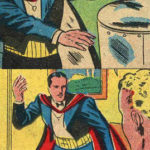
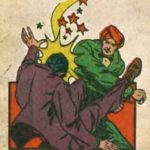
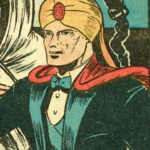
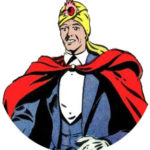
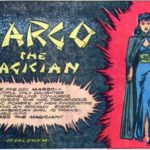
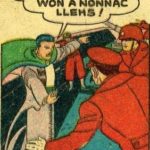
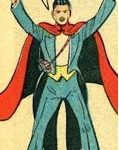
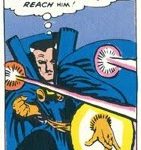
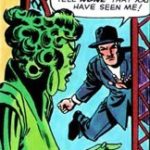
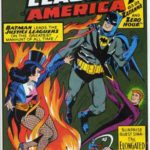
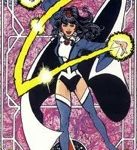
Comments are closed.